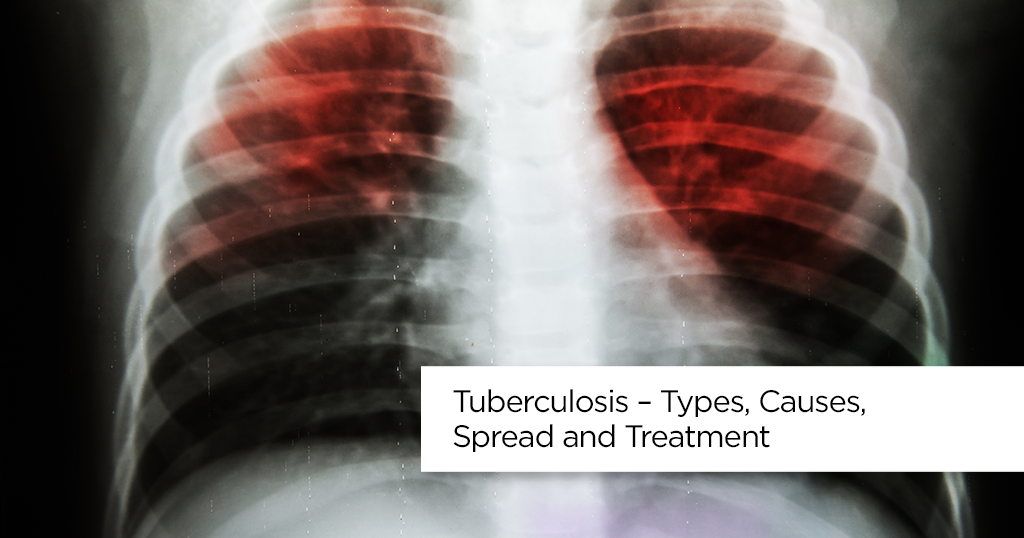

TB or Tuberculosis of is one of the most commonly found diseases in India. It is a highly infectious disease caused by bacteria (usually Mycobacterium tuberculosis) and most commonly affects the lungs. Because it spreads through air, this infection is found in many humans. However, in most people it is latent and only 10% of these infections turn into an active disease.
While the most commonly affected sites in humans are the lungs, TB can also occur in bones, especially in the spine and at the ends of the long bones.
Other common sites of non-pulmonary TB include the lymph nodes, brain and kidneys. In fact, there is virtually no organ that cannot be touched by TB.
The peculiar thing about the TB bacteria is that it can stay in the bloodstream of a person and not develop into active disease. The most frequent method of testing for TB is through a skin test called the Mantoux test or the tuberculin skin test. This test only determines whether the person being tested has the bacteria present in him or her, and not whether it has evolved into a full-fledged, active disease. Thus, it has less diagnostic value in countries like India and hold relevance in certain clinical situations only.
Latent TB is inactive, has no symptoms and is not contagious. Active TB makes a person sick and is highly contagious. It is not necessary that everyone infected with the TB bacteria develop active TB. In fact, most usually don’t.
While there are not any symptoms for latent TB, you have to get a skin or blood test to determine whether you have it or not.
However, there are generally some signs of it if you have active TB disease, which include:
Tuberculosis is an airborne disease and spreads from person to person through tiny droplets discharged into the air (when someone who has it sneezes, coughs, talks, laughs or sings). It spreads through very close contact when a person breathes the same air as the TB patient.
TB can also be passed on from an infected pregnant woman to her child.
In a country like India, where the TB bacteria are so prevalent, it is imperative to maintain hygiene to prevent the spread of the disease. Spitting in public or coughing or sneezing without covering the mouth should be completely discouraged.
It’s also important to note that TB does not spread by touching the clothes, linen or utensils of an infected person.
Also, people with AIDS are very susceptible to TB as their immune systems are too weak to fight the bacteria.
As it is caused by bacteria, TB infection can be treated with antibiotics and is nearly always curable with proper treatment. Proper treatment may generally involve taking a tablet three times a week for a minimum of six months. Too often, this routine is not followed. For both the sake of money and convenience, patients may stop the medication sooner than six months if they start to feel better. However, stopping treatment has serious costs over time because the TB bacteria can better learn how to resist the standard medications when only a partial course is taken. The standard treatment for TB relies on the “first-line” drugs of ethambutol, isoniazid, pyrazinamide, rifampicin and streptomycin. When these are no longer effective, it becomes necessary to rely on drugs that cost more, need to be taken for a longer time (up to 24 months) and are harsher on the body.
The treatment for TB is often referred to as “DOTS.” This stands for Directly Observed Treatment, Short Course, which is the World Health Organization’s cornerstone of organizing TB treatment in countries around the world. India’s DOTS programme is undertaken by TB Control (TBC) within the central Ministry of Health and Family Welfare.
When treated properly, the risk of dying from TB is very low.
Even though an individual takes TB medicines, the treatment process is a household or community responsibility, in partnership with the health system. With this approach, India has progressed in treating more number of patients over years. To bring the cure rate even higher and lower the spread of TB, we have to encourage testing for TB and be supportive of anyone you know who is being treated for TB. The major symptom is having a cough that lasts for two weeks or more. If you suspect that you or someone you know may have TB, you should report to Public Health Authorities or a health care worker.
The content is verified and reviewd by experienced practicing Pulmonologist to ensure that the information provided is current, accurate and above all, patient-focused
